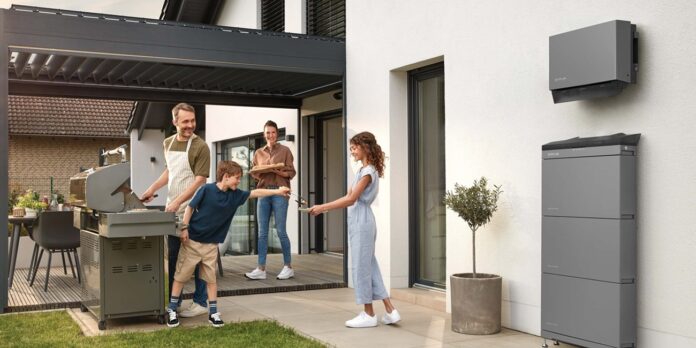As electricity prices rise and climate concerns become more urgent, more homeowners are asking the same question: How can I make my home energy-efficient and sustainable without sacrificing comfort or reliability? The answer increasingly points to one powerful solution—home battery storage.
While solar panels have long been the go-to for generating clean energy, they don’t solve everything. They produce power only during daylight hours, and any excess often goes unused. That’s where battery storage systems come in. By storing the energy you generate, you gain control over how and when it’s used—an essential step toward reaching net-zero energy. Many forward-thinking energy brands now offer integrated systems that make this process smoother and more accessible than ever before.
What Is a Net-Zero Energy Home?
A net-zero energy home (or zero-energy building) is a residence that produces as much energy as it consumes annually. It combines high-efficiency construction, smart appliances, renewable energy generation, and—critically—battery backup systems to balance energy input and output.
Net-zero homes draw energy from the grid when needed but also return unused electricity via systems like net metering, allowing the household to “break even” or even receive credits. However, solar generation alone isn’t enough; without energy storage and home battery storage, you risk losing the full value of your solar investment.
Why Energy Storage Is Essential for Net-Zero Goals
Managing Energy Supply and Demand
Solar energy is inherently intermittent. Your panels may generate ample power during the day, but what happens after sunset? Without storage, your system sends excess power to the grid (often at a lower rate), and you end up buying it back later at peak pricing. Batteries help you store that energy for use when you actually need it—especially at night or during cloudy days.
This shift from immediate consumption to strategic storage makes balancing your energy use much more achievable.
Increasing Energy Independence
Net-zero homes aim to rely as little as possible on utility companies, not just for financial reasons but for energy security. In areas prone to blackouts or energy rationing, batteries can provide uninterrupted power. Some advanced systems even support “islanding,” which allows homes to operate off-grid temporarily during outages.
Reducing Carbon Footprint
Battery systems help homeowners use more of their self-generated clean energy instead of pulling electricity from fossil-fuel-powered grids. This significantly reduces household carbon emissions, bringing you closer to a truly sustainable lifestyle.
How Energy Storage Works in Practice
Daytime:
Solar panels generate electricity, which is first used to power the home’s immediate energy needs. Any excess energy that isn’t used right away is then stored in the battery system for later use, such as during the evening or when solar generation is low.
Evening or Cloudy Weather:
The battery discharges stored energy to meet the household’s electricity demand. If the battery becomes depleted, the system automatically draws power from the grid to ensure a continuous energy supply.
Peak Demand:
Batteries can discharge stored energy during periods when electricity prices from the grid are high, helping households save money on their energy bills.
Comparing Battery Types for Net-Zero Homes
| Battery Type | Pros | Cons | Ideal For |
| Lithium-Ion | Long lifespan, high efficiency | Higher upfront cost | Long-term investment, frequent use |
| Lead-Acid | Low cost | Shorter life, lower depth of discharge | Occasional use, budget-focused users |
| Flow/Saltwater | Sustainable, non-toxic, scalable | Larger size, emerging tech | Eco-conscious, flexible installations |
For net-zero ambitions, lithium-ion batteries are currently the most practical due to their long lifespan and energy efficiency.
Financial Impact: Are Batteries Worth the Cost?
One of the main barriers to adoption is the upfront investment. Battery systems in the UK typically range from £6,000 to £12,000, depending on size, technology, and brand. However, several factors help justify the cost:
- Energy bill savings: By using more of your own generated energy instead of purchasing from the grid, you reduce your electricity costs.
- Incentives & rebates: While the UK does not have a direct equivalent to the U.S. federal solar tax credit, home battery storage installed alongside solar panels currently benefits from 0% VAT, significantly reducing costs.
- Time-of-use optimisation: Batteries enable you to avoid expensive peak electricity rates by discharging stored energy during high-tariff periods, helping lower your overall energy bills.
Design Tips for Building a Net-Zero Home with Batteries
Right-Size the System
Calculate your daily energy needs and peak demand. Oversized systems increase cost without proportional return; undersized ones won’t deliver full value. A professional energy audit can help strike the right balance.
Combine with Smart Home Tech
Pairing batteries with smart thermostats, appliance timers, and energy management systems can help automate usage and optimize efficiency.
Consider Future Expansion
Think long term—will you be adding an electric vehicle, hot tub, or home office in the future? Ensure your battery system is expandable or modular to accommodate growth.
Evaluate Your Climate
Battery performance varies with temperature. Make sure your storage location is insulated and ventilated, or choose a product built for rugged conditions.
Common Challenges—and How to Overcome Them
Upfront Cost
Yes, batteries aren’t cheap. But:
- Government subsidies help reduce initial costs.
- Financing options and leasing models are increasingly available.
- Long-term energy savings usually outweigh the initial expense.
Installation Complexity
Integrating batteries into an existing home can require electrical upgrades. Work with certified professionals who understand local regulations and permitting requirements.
Regulatory Uncertainty
Net metering policies vary by location and may change. Stay updated on local utility policies and design your system to be flexible and grid-independent if necessary.
Net-Zero in Action
A family in Surrey retrofitted their semi-detached home with solar panels and a 13 kWh lithium-ion battery system. Their smart energy setup automatically stored excess solar power generated during the day and used it during peak times when electricity from the grid is most expensive.
By combining this with better insulation, LED lighting, and energy-efficient appliances, they were able to achieve net-zero electricity usage within 18 months. According to independent monitoring, their monthly electricity bill dropped from around £150 to nearly zero, and their carbon footprint was reduced by more than 60%.
This kind of setup demonstrates how UK households can take meaningful steps toward energy independence and climate goals—without sacrificing comfort.
One of the standout brands in the clean energy space is EcoFlow, known for its reliable and scalable battery systems that integrate seamlessly with solar. Their user-friendly design and modular approach make them a top choice for homeowners looking to reach net-zero with minimal hassle. Whether you’re starting small or planning a full-home backup, it offers flexible options that grow with your needs.
Conclusion
Achieving a net-zero energy home isn’t just a dream—it’s a practical goal within reach for many homeowners. Smart storage plays a central role in this transformation by bridging the gap between energy generation and energy use. With the right system, smart planning, and a little patience, you can cut your energy bills, reduce your carbon footprint, and increase your energy independence.
As energy systems continue to evolve, home battery storage is no longer optional—they’re essential. Curious how a tailored solution could fit your lifestyle and long-term savings goals? Explore battery options from trusted brands to take the next step toward a smarter, cleaner, and more resilient home.






